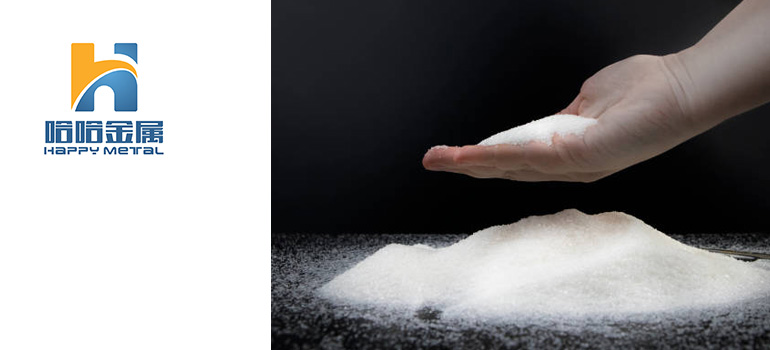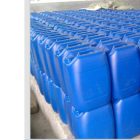Summary:
Revolutionizing Food Preservation: The Role of Food Grade Phosphates
What Are Food Grade Phosphates?
Types of Food Grade Phosphates
Importance of Food Grade Phosphates in Food Preservation
Applications of Food Grade Phosphates in Food Preservation
Food grade phosphates are essential additives that play a crucial role in preserving the quality and safety of our food. These compounds, derived from phosphoric acid, serve as multifunctional ingredients in a wide range of food products. Let’s delve deeper into what exactly food grade phosphates are and why they’re indispensable in the food industry.
What Are Food Grade Phosphates?
Food grade phosphates are a group of compounds derived from phosphoric acid, a naturally occurring mineral. They come in various forms, including sodium phosphate, potassium phosphate, and calcium phosphate, each with its unique properties and applications. These phosphates are classified as “food grade” when they meet strict purity standards set by regulatory authorities, ensuring they are safe for consumption.
Types of Food Grade Phosphates
There are several types of food grade phosphates commonly used in food processing. Sodium phosphates, such as monosodium phosphate and disodium phosphate, are widely utilized for their ability to adjust acidity, improve texture, and enhance moisture retention in food products. Potassium phosphates, including monopotassium phosphate and dipotassium phosphate, are often used as buffering agents and emulsifiers. Calcium phosphates, such as tricalcium phosphate and dicalcium phosphate, are valued for their role in fortifying foods with essential minerals like calcium.
Importance of Food Grade Phosphates in Food Preservation
Food grade phosphates play a vital role in food preservation by inhibiting microbial growth, preventing spoilage, and extending shelf life. These compounds act as chelating agents, binding with metal ions that promote oxidation and rancidity in foods. Additionally, they help maintain the pH balance of food products, which is critical for inhibiting the growth of harmful bacteria. By enhancing the stability and safety of food, food grade phosphates contribute to reducing food waste and ensuring a longer shelf life for perishable items.
Applications of Food Grade Phosphates in Food Preservation

How Food Grade Phosphates Work to Preserve Food
Food grade phosphates work through a combination of mechanisms to preserve food and extend its shelf life. Let’s explore how these compounds exert their preserving effects:
Moisture Retention: Food grade phosphates have hygroscopic properties, meaning they can attract and retain moisture. In meat products, for example, phosphates help retain water during processing and cooking, preventing dryness and improving juiciness. This moisture retention not only enhances the sensory qualities of the food but also contributes to its overall quality and palatability.
pH Regulation: Phosphates play a crucial role in regulating the pH of food products. By acting as buffering agents, they help maintain the acidity or alkalinity of the food within a desired range. This pH regulation inhibits the growth of spoilage microorganisms, such as bacteria and molds, which thrive in environments with specific pH conditions. By controlling microbial growth, phosphates help prevent food spoilage and extend its shelf life.
Antioxidant Activity: Food grade phosphates exhibit antioxidant properties, which help protect food from oxidative deterioration. Oxidation is a chemical reaction that occurs when food is exposed to oxygen, leading to the formation of undesirable off-flavors, odors, and textures. Phosphates function as chelating agents, binding with metal ions that catalyze oxidation reactions. By sequestering these metal ions, phosphates prevent oxidative damage and help maintain the freshness and quality of the food.
Texture Enhancement: In processed food products, phosphates can improve texture and mouthfeel by interacting with proteins and other food components. For example, in processed meats, phosphates facilitate protein solubilization, resulting in improved water-binding capacity and texture. This enhanced texture not only enhances the eating experience but also contributes to the stability and appearance of the final product.
Microbial Inhibition: Phosphates have antimicrobial properties that inhibit the growth of bacteria, yeasts, and molds in food products. By disrupting the cell membranes or metabolic processes of microorganisms, phosphates can effectively control microbial proliferation and prevent foodborne illnesses. This antimicrobial activity is particularly important in perishable food items, such as meat, seafood, and dairy products, where microbial contamination poses a significant risk to food safety.
Overall, the multifaceted actions of food grade phosphates contribute to the preservation of food by maintaining moisture levels, regulating pH, inhibiting oxidation and microbial growth, and enhancing texture. These properties make phosphates invaluable additives in the food industry, ensuring the safety, quality, and shelf stability of a wide range of food products.
Role of Food Grade Phosphates in Meat Preservation
The role of food grade phosphates in meat preservation is multifaceted, encompassing various aspects that contribute to the overall quality, safety, and shelf life of meat products. Here’s an in-depth look at how food grade phosphates aid in the preservation of meat:
Water Retention: One of the primary functions of food grade phosphates in meat preservation is their ability to retain moisture. Phosphates act as water-binding agents, enabling meat to retain its natural juices during processing, storage, and cooking. This moisture retention helps prevent the meat from drying out, resulting in juicier, more succulent products. Additionally, improved water retention can enhance the tenderness and texture of meat, leading to a more enjoyable eating experience.
pH Regulation: Food grade phosphates play a crucial role in regulating the pH of meat products. By acting as buffering agents, phosphates help maintain the acidity level within the meat, creating an environment that inhibits the growth of spoilage microorganisms. Controlling the pH also helps preserve the natural color and flavor of the meat, as well as extend its shelf life by slowing down the rate of microbial spoilage.
Texture Enhancement: Phosphates can improve the texture and tenderness of meat by interacting with proteins. They help break down protein structures, making them more soluble and allowing them to bind more water. This results in meat that is more tender, juicy, and less prone to toughness, especially in processed meat products such as sausages, deli meats, and marinated cuts.
Microbial Inhibition: Food grade phosphates possess antimicrobial properties that help inhibit the growth of bacteria, yeasts, and molds in meat products. By disrupting microbial cell membranes or metabolic processes, phosphates can effectively control the proliferation of spoilage and pathogenic microorganisms, thus extending the shelf life of meat and reducing the risk of foodborne illnesses.
Oxidation Prevention: Phosphates also serve as antioxidants, helping to prevent oxidative deterioration in meat products. Oxidation can lead to the development of off-flavors, rancidity, and discoloration in meat, compromising its quality and shelf life. By scavenging free radicals and chelating metal ions that catalyze oxidation reactions, phosphates help maintain the freshness, color, and flavor of meat products, especially those that are exposed to air during processing and storage.
In summary, food grade phosphates play a vital role in meat preservation by enhancing water retention, regulating pH, improving texture, inhibiting microbial growth, and preventing oxidative deterioration. These properties make phosphates indispensable additives in the meat industry, ensuring the safety, quality, and shelf stability of various meat products.
Utilizing Food Grade Phosphates in Dairy Products Preservation
Utilizing food grade phosphates in dairy products preservation involves several key mechanisms that contribute to maintaining freshness, quality, and safety. Here’s a detailed exploration of how food grade phosphates play a crucial role in preserving dairy products:
pH Regulation: Food grade phosphates serve as buffering agents in dairy products, helping to regulate pH levels. By maintaining optimal acidity, phosphates create an environment that inhibits the growth of spoilage bacteria and fungi, thus extending the shelf life of dairy products such as milk, cheese, and yogurt. Additionally, controlling pH can enhance the stability of dairy emulsions, preventing phase separation and maintaining product consistency.
Calcium Sequestration: Phosphates in dairy products can chelate calcium ions, which are essential for the growth of spoilage microorganisms. By sequestering calcium, phosphates inhibit the enzymatic activity of microorganisms and prevent their proliferation. This calcium sequestration also helps preserve the texture and structure of dairy products, particularly in processed cheeses and dairy-based desserts, by preventing undesirable changes in texture and consistency.
Water Binding: Food grade phosphates have hygroscopic properties, meaning they can attract and bind water molecules. In dairy products such as processed cheese and cream-based desserts, phosphates help improve water retention and prevent syneresis (the release of whey or liquid). This enhanced water binding capacity contributes to the creaminess, smoothness, and mouthfeel of dairy products, while also extending their shelf life by reducing moisture loss and maintaining product integrity.
Protein Interaction: Phosphates interact with dairy proteins, such as casein and whey proteins, to modify their structure and functionality. In cheese making, phosphates can enhance the solubility and dispersibility of proteins, leading to smoother textures and improved meltability in processed cheese products. Additionally, phosphates can facilitate protein denaturation and aggregation, which helps stabilize dairy emulsions and prevent protein aggregation during processing and storage.
Microbial Inhibition: Food grade phosphates exhibit antimicrobial properties that help inhibit the growth of bacteria, yeasts, and molds in dairy products. By disrupting microbial cell membranes or metabolic pathways, phosphates can effectively control microbial proliferation and extend the shelf life of dairy products. This microbial inhibition is particularly important in fresh dairy products such as milk and yogurt, where microbial spoilage can occur rapidly and compromise product safety.
Overall, the utilization of food grade phosphates in dairy products preservation involves a combination of pH regulation, calcium sequestration, water binding, protein interaction, and microbial inhibition. These mechanisms work synergistically to maintain the freshness, quality, and safety of dairy products, ensuring consumer satisfaction and product stability throughout their shelf life.
Extending Freshness: Food Grade Phosphates in Baked Goods
Extending freshness is a crucial goal in the baking industry, and food grade phosphates play a significant role in achieving this objective. Let’s delve into how food grade phosphates contribute to extending the freshness of baked goods:
Moisture Retention: Food grade phosphates help baked goods retain moisture, which is essential for preserving their softness, tenderness, and overall freshness. Phosphates act as water-binding agents, attracting and holding moisture within the baked products’ structure. This moisture retention prevents baked goods from becoming dry and stale, even after prolonged storage, thereby extending their shelf life and improving consumer satisfaction.
Texture Improvement: Phosphates interact with proteins and starches in baked goods, influencing their structure and texture. By modifying protein functionality, phosphates can enhance the elasticity and resilience of dough, resulting in bread, cakes, and pastries with a softer, more resilient crumb. Similarly, phosphates can improve the texture of baked goods by optimizing starch gelatinization and retrogradation, leading to products that remain tender and fresh for longer periods.
pH Adjustment: Proper pH control is critical for maintaining the freshness of baked goods and inhibiting the growth of spoilage microorganisms. Food grade phosphates act as pH regulators, helping to balance the acidity or alkalinity of dough and batter. By creating an environment that is unfavorable for microbial growth, phosphates help prevent mold and bacterial spoilage, thereby extending the shelf life of baked goods and ensuring their safety for consumption.
Antioxidant Properties: Oxidation is a common cause of staleness and rancidity in baked goods, particularly those containing fats and oils. Food grade phosphates exhibit antioxidant properties, which help prevent oxidative deterioration and preserve the freshness of baked products. By scavenging free radicals and chelating metal ions that promote oxidation, phosphates protect the flavor, aroma, and texture of baked goods, ensuring they remain appealing and palatable over time.
Improved Volume and Structure: Phosphates can enhance the volume and structure of baked goods by improving gas retention and dough expansion during leavening. In bread and other leavened products, phosphates interact with yeast and baking powder to facilitate gas production and stabilization, resulting in a finer crumb structure and increased loaf volume. This improved volume and structure contribute to the overall freshness and quality of baked goods, making them more visually appealing and enjoyable to consume.
Overall, the utilization of food grade phosphates in baked goods is instrumental in extending their freshness by improving moisture retention, texture, pH balance, antioxidant activity, and volume. By incorporating phosphates into their formulations, bakeries can produce high-quality products that remain fresh and delicious for an extended period, meeting consumer demands for convenience, flavor, and shelf stability.
Maybe you are interested in the following: Unveiling the Surprising Benefits of Citric Acid in Food




